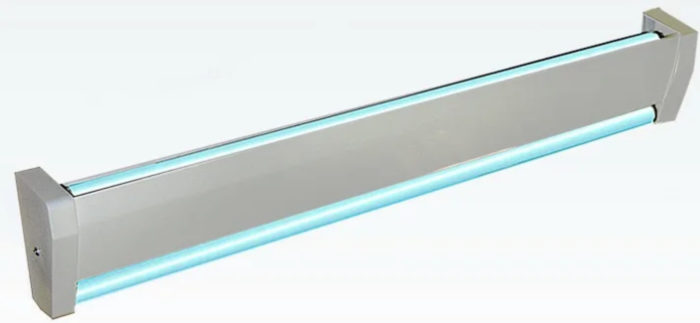How to use a germicidal lamp
One of the most interesting light devices is the germicidal lamp. This device is designed not to illuminate the room, but to disinfect it and clean it from unwanted microorganisms. The equipment is used in many areas, providing a comfortable environment.
What is a germicidal lamp
Bactericidal lamp is an electrical device that emits waves in the UV spectrum. These waves affect the chemical structure of the air, the condition of living organisms and plants.
The cells emit UV rays with a wavelength of 180-250 nm. Radiation effectively destroys bacteria (staphylococcus, salmonella, enterococcus, etc.), viruses, yeast fungi, mold.
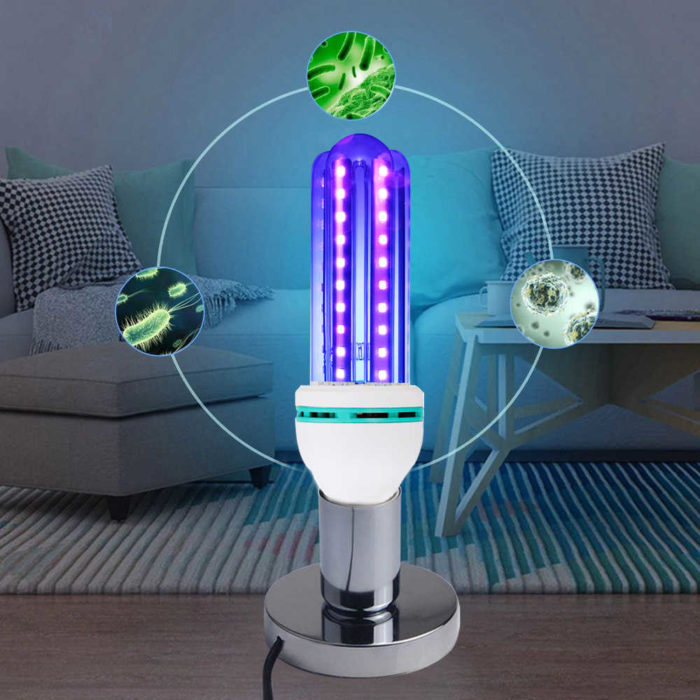
The emitted light acts as a disinfectant and completely destroys microorganisms in the air and on surfaces. The short range radiation is completely safe for humans and animals.
It is used for therapeutic purposes to destroy germs that cause inflammation of the skin, ear canals, throat and nose. Dosed irradiation helps improve immune function, relieve pain after injuries, and reduce fatigue.
Types of germicidal lamps for the home
Bactericidal elements are used in homes to disinfect water and rooms. The first category of probors is most often found in private homes. The emitters are built into water supply assemblies, cleaning the water flowing through the pipes from the microorganisms it contains.
Indoor lamps can be stationary or portable. Stationary ones usually have a solid base and are mounted in a specific place in the house. The range of such a germicidal lamp is somewhat limited, which affects the result.
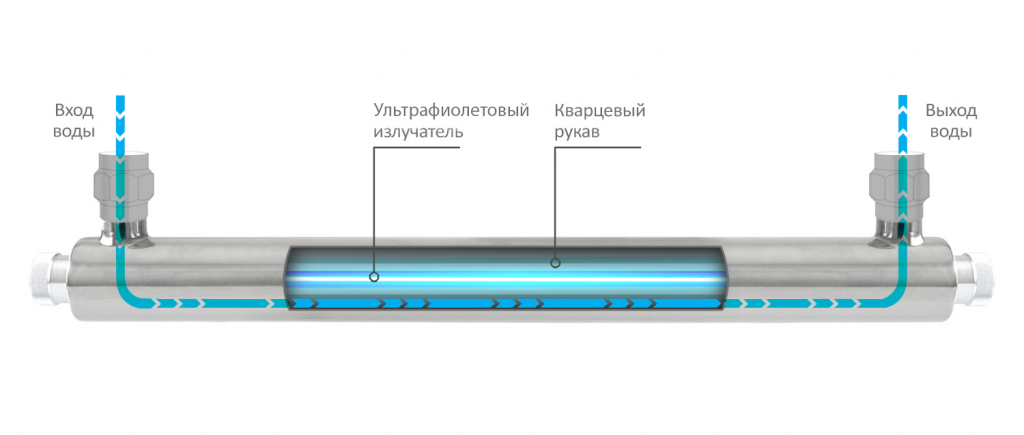
Mobile devices can be installed in different places and are perfect for any premises. Due to mobility, the radius of action increases significantly.
By design, devices are distinguished:
- open type;
- Closed type (recirculators).
Radiation from the lamps of the open type spreads throughout the room, while closed designs involve a step-by-step treatment.
The process of cleaning the space in closed-type elements can be described as follows:
- Through a fan, air from the outside environment enters the cleaning area;
- It is exposed to ultraviolet light and purified;
- The purified air is discharged back into the room.
This method is convenient because it can be implemented in the presence of people.
By design, the elements come in the following types:
- floor-mounted;
- hinged;
- table-top.
Floor-type structures are suitable for decontamination of spacious premises. Most often they are mobile and move on a platform.
Hanging ones are stationary germicidal devices, recessed into the ceiling or walls.
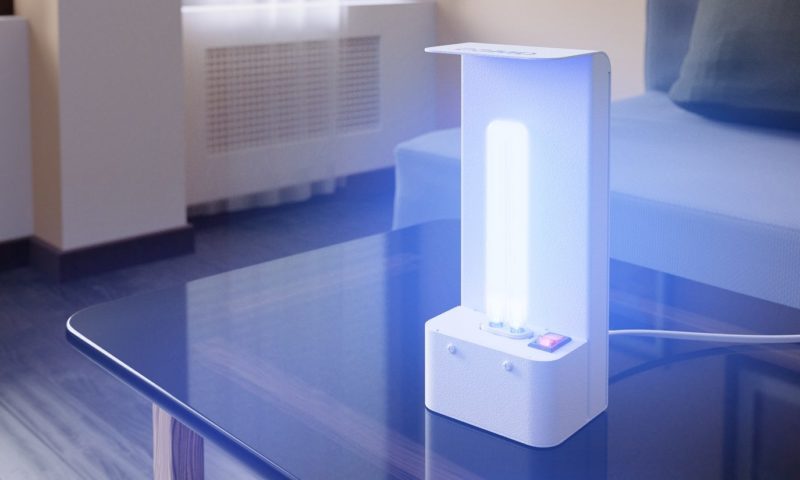
A variety of mobile germicidal devices are table lamps. The main advantage is the possibility of local disinfection with local irradiation of surfaces. The models have different characteristics and performance indicators. They should be selected in strict accordance with your specific goals.
What is used for
Bactericidal elements are usually used for the following tasks:
- deep cleaning and disinfection of drinking water;
- treatment of swimming pool water;
- Decontamination of indoor air and surfaces;
- sterilization of medical instruments.
The effectiveness of killing microorganisms is the reason for using germicidal lamps during epidemics.
At home, devices of low power are used, which do not require protective measures. In an epidemic, it is desirable to turn on the device daily, while in the normal period a weekly treatment of the premises is sufficient.
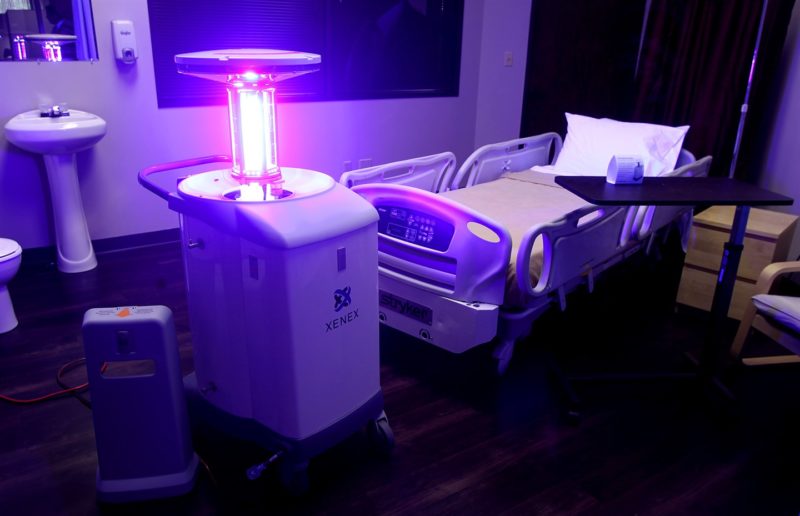
Devices of this type can be found in the following industries:
- hospitals and medical institutions;
- swimming pools;
- public buildings where large numbers of people gather;
- in food processing plants;
- Schools, kindergartens and similar institutions.
How the germicidal lamp works
The principle of the germicidal lamp is the effect of electricity on the mercury vapor in the bulb. The process involves steps:
- A voltage of a set value is applied to the contacts from the control device.
- The mercury vapor is punctured by the charge and begins to glow.
- UV radiation is created.
- The uviolet glass traps the high frequency waves.
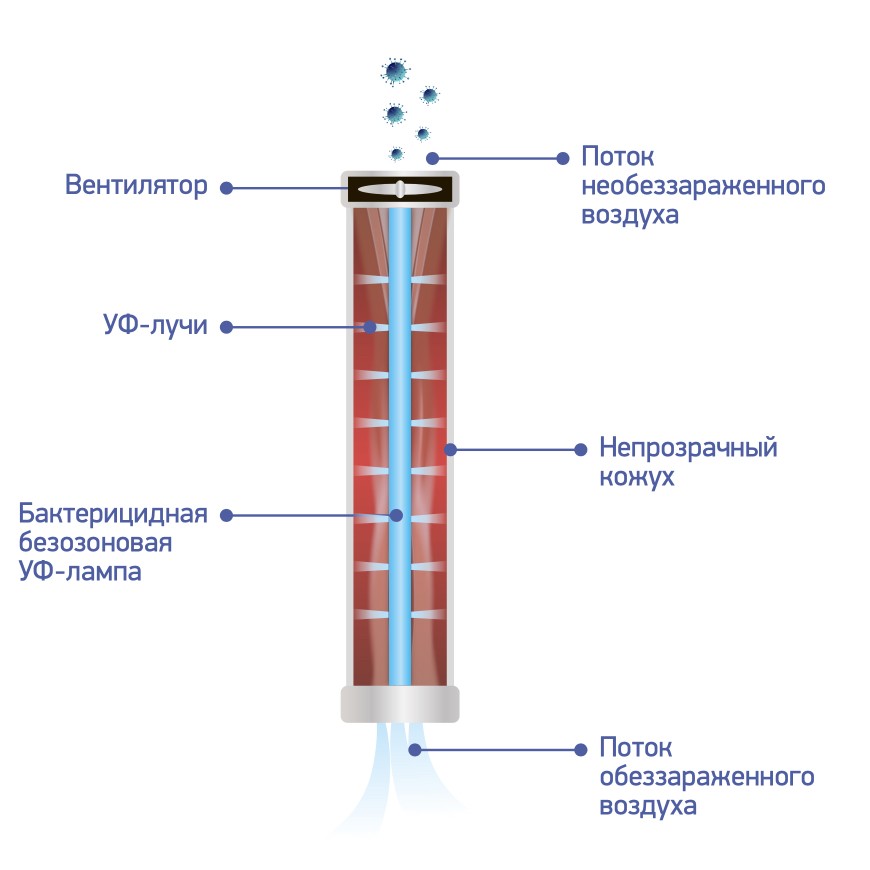
The sources are powered by 220 volts and a frequency of 50 Hz. The design of the germicidal lamp provides for its installation in irradiators or in standard household fixtures with a classic socket.
Rules of operation
When operating the germicidal lamps it is important to consider their features. Actions should be carried out exactly according to the instructions, for safety it is important to study the recommendations from the manufacturer.
Instructions for use
Before using germicidal lamps with directional flow, it is important to remove people and animals from the room.
Recirculators are installed on the walls of the rooms, taking into account the main air flows. The optimal location will be a height of about 2 m from the floor next to the heating devices.
Video on the subject.
For short-term treatment of the room, it is advisable to use irradiators of mixed type. As long as there are people, closed germicidal lamps work, when the room is vacated, the main emitters are launched for some time. For complete disinfection, 5 minutes of operation is sufficient. There should be 3 hours between treatments, this period is set as a baseline for the emergence of new bacteria and microorganisms.
If there are no people in the room, open emitters are used, which can run for up to 25 minutes. During this time the optimal level of exposure is achieved. A minimum of 2 hours should elapse before the next cleaning.
Power to the devices is supplied by a switch, which should be placed in an adjacent room. It is advisable to immediately place a hazardous area sign above the entrance with a recommendation not to enter.
Personal protective equipment such as mask, goggles and gloves must be worn by all persons in the room during treatment.
Maintenance
Maintenance of the germicidal lamp involves the thorough cleaning of the bulb and screens from dust and dirt with a disinfectant. Cleaning should always be done on a schedule. You may only wipe the unit when it is unplugged.
If the lamp has reached the end of its specified period of use, it should be immediately replaced with a new one. Sensors can be used to monitor the life of the equipment. They show the total operating time in hours and allow evaluating the condition of the electrical device.
Radiometer readings that record the decrease in radiation power are taken into account separately.
Recommended viewer: This XIAOMI lamp KILLS viruses and bacteria
Safety Requirements
Compared to a quartz lamp, bactericidal sources have a milder effect on the human body. In addition, you do not need to ventilate the room after using the device.
To use a bactericidal lamp without causing problems, follow the rules:
- It is desirable to use the device in a room without people and animals;
- Wear safety glasses before entering a room with a working germicidal equipment;
- It is better to put the switch outside;
- If the lamp has been at low temperatures for a long time, let it stay at room temperature for some time before turning it on;
- Disinfection should be performed according to a strict schedule;
- The lamp can be switched on a second time only after it has cooled down completely;
- Do not allow dust and dirt to appear on the bulb;
- Clean the device with a soft cloth soaked in disinfectant;
- For some diseases it is forbidden to use the lamp to kill bacteria (it is better to consult a specialist in advance).
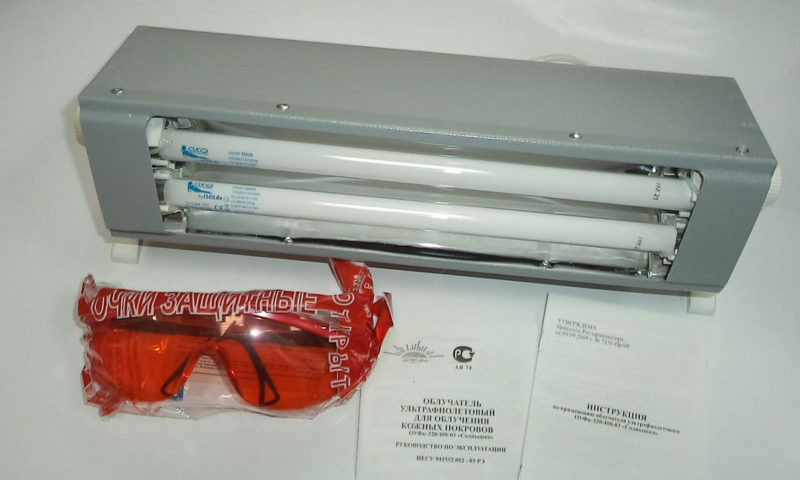
Advantages and disadvantages of the lamp
The advantages of bactericidal lamps include:
- destroying pathogenic microorganisms;
- purification of air from dust, allergens and unwanted impurities;
- Prevention in children of rickets and viral diseases;
- radiation helps to quickly cope with skin, joint and respiratory diseases;
- effective in cosmetology.
There are contraindications associated with the possibility of complications of diseases and conditions:
- hypertension;
- tuberculosis;
- gastric ulcer;
- Individual intolerance to ultraviolet light;
- fever.
The use of UV radiation in these cases can cause serious harm. Otherwise, the benefits of the device are obvious.

